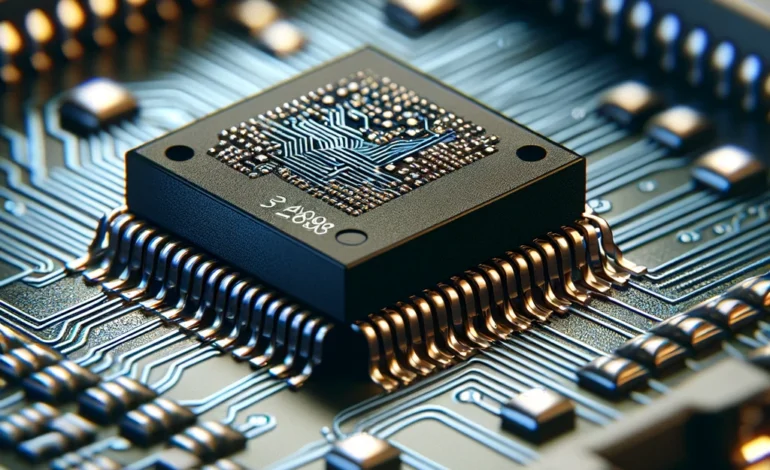Picture Archiving and Communication PACS Systems in Healthcare

Picture Archiving and Communication Systems (PACS) are comprehensive solutions designed to manage and streamline medical imaging processes within healthcare facilities. These systems play a crucial role in digitizing and organizing various types of medical images, including X-rays, MRI scans, CT scans, and ultrasound images.
PACS systems consist of interconnected components that work together to acquire, store, transmit, and display medical images efficiently. They have transformed traditional film-based imaging processes into digital workflows, significantly enhancing the accessibility and usability of medical images for healthcare professionals.
Components of PACS Systems
Image Acquisition
Digital Image Capture Devices
One of the key components of PACS systems is image acquisition devices, which include a range of digital imaging modalities such as X-ray machines, MRI scanners, CT scanners, and ultrasound machines. These devices capture high-quality digital images of patients’ anatomical structures or physiological processes.
DICOM Standard Compliance
PACS systems adhere to the Digital Imaging and Communications in Medicine (DICOM) standard, ensuring interoperability and compatibility between different imaging modalities and PACS components. DICOM standardization facilitates seamless integration and exchange of medical images and related information within the healthcare environment.
Image Storage
Centralized Digital Repository
PACS systems utilize centralized digital repositories for storing medical images in a secure and organized manner. These repositories typically consist of servers or network-attached storage devices capable of handling large volumes of image data generated by various imaging modalities.
Scalable Storage Solutions
To accommodate the ever-increasing volume of medical images generated in healthcare facilities, PACS systems employ scalable storage solutions that can expand dynamically to meet growing storage demands. Scalable storage architectures ensure continuous availability and accessibility of archived images while optimizing storage resources.
Image Viewing Stations
Specialized Viewing Software
PACS provides healthcare professionals with specialized viewing software installed on dedicated workstations, allowing them to access, manipulate, and interpret medical images conveniently. These viewing stations are equipped with advanced tools and functionalities designed to enhance image visualization and analysis.
Multi-Modal Image Viewing
With PACS systems, healthcare professionals can view medical images from different modalities, such as X-rays, MRI scans, CT scans, and ultrasound images, on the same workstation. This multi-modal image viewing capability enables comprehensive and integrated diagnostic assessments, facilitating more informed clinical decision-making.
Image Transmission
Network Connectivity
PACS systems leverage network connectivity to transmit medical images securely and efficiently across healthcare facilities and geographical locations. High-speed networks enable rapid image transfer, ensuring timely access to images for diagnosis, treatment planning, and consultation purposes.
Remote Access
PACS systems support remote access to medical images, allowing authorized users to retrieve and view images from any location with internet connectivity. Remote access capabilities enhance collaboration among healthcare professionals, enabling timely consultations and second opinions regardless of physical distance.
Image Archiving
Long-Term Storage
PACS systems are designed for long-term storage of medical images, ensuring the preservation and accessibility of patient data over extended periods. Robust archiving mechanisms protect against data loss or corruption, safeguarding valuable medical images for retrospective analysis, research, and legal purposes.
Data Backup and Redundancy
To mitigate the risk of data loss due to hardware failures or disasters, PACS implement data backup and redundancy strategies. Automated backup routines and redundant storage configurations ensure data integrity and availability, minimizing the impact of potential storage failures or disruptions.
Integration with Electronic Health Records (EHR)
Seamless Data Integration
PACS systems seamlessly integrate with Electronic Health Record (EHR) systems, enabling unified access to patient information alongside medical images. Integration with EHR platforms enhances workflow efficiency, streamlines clinical documentation, and supports comprehensive patient care management.
Interoperability Standards
Interoperability standards such as Health Level Seven (HL7) and Integrating the Healthcare Enterprise (IHE) facilitate seamless data exchange between PACS and EHR systems. Standardized interfaces and protocols ensure compatibility and interoperability, enabling efficient information sharing across disparate healthcare IT systems.
Benefits of PACS Systems
Enhanced Workflow Efficiency
PACS systems streamline medical imaging workflows, reducing the time and effort required to acquire, store, retrieve, and distribute medical images. Automated processes and centralized data management enhance productivity and optimize resource utilization within healthcare facilities.
Improved Accessibility and Availability
By digitizing medical images and leveraging network connectivity, PACS systems improve the accessibility and availability of imaging data for healthcare professionals. Authorized users can retrieve and view images remotely, facilitating timely diagnoses, treatment planning, and consultations.
Challenges and Limitations of PACS Systems
Data Security and Privacy Concerns
PACS systems face challenges related to data security and privacy, particularly regarding the protection of sensitive patient information contained in medical images. Implementation of robust security measures and compliance with regulatory requirements are essential to mitigate risks associated with unauthorized access or data breaches.
Interoperability Issues
Interoperability issues between PACS systems and other healthcare IT systems can hinder seamless data exchange and interoperability. Incompatibilities in data formats, communication protocols, and system interfaces may require additional resources and efforts to achieve integration and interoperability.
Future Trends in PACS Systems
Artificial Intelligence Integration
The integration of artificial intelligence (AI) technologies into the PACS system holds promise for enhancing image analysis, interpretation, and decision support capabilities. AI algorithms can assist healthcare professionals in detecting abnormalities, predicting disease progression, and optimizing treatment planning based on medical image data.
Cloud-Based Solutions
Cloud-based PACS solutions offer scalability, flexibility, and cost-effectiveness compared to traditional on-premises deployments. Cloud infrastructure enables seamless access to medical images from any location with internet connectivity, facilitating remote collaboration and expanding healthcare service delivery beyond traditional boundaries.
Advanced Visualization Techniques
Advancements in visualization technologies, such as 3D reconstruction, virtual reality (VR), and augmented reality (AR), are shaping the future of the PACS system. These techniques enable immersive and interactive visualization of medical images, enhancing diagnostic accuracy, surgical planning, and medical education.
Interoperable Healthcare Ecosystems
Future PACS systems will be part of interoperable healthcare ecosystems that seamlessly integrate with other clinical and administrative systems. Interoperability standards and frameworks will promote data exchange, interoperability, and collaboration across healthcare organizations, driving improvements in patient care delivery and outcomes.
Conclusion
In conclusion, PACS systems play a vital role in modern healthcare delivery by providing efficient tools for managing medical imaging data. Despite challenges such as implementation costs, interoperability, and data security, the benefits of PACS systems in terms of workflow efficiency, accessibility, cost savings, diagnostic accuracy, collaboration, and regulatory compliance outweigh the challenges. With continued advancements in technology and ongoing efforts to address these challenges, the PACS system will continue to evolve and improve patient care outcomes in the years to come.
Read more about Ultimate Guide for MYKPHR and How it Empowering Health Care Department














